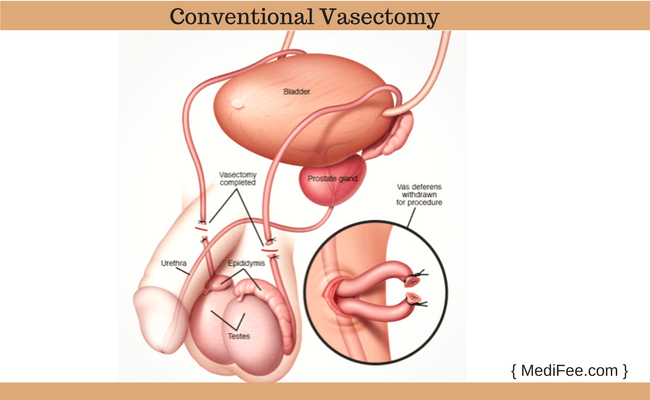From The Ancient Methods Of Contraception To The Effective Ones
Women belonging to the region of Ancient Greece as well as Rome used Silphium, a species of giant fennel, which was generally used for seasoning as a medium for controlling birth.
The juice of this particular herb was believed to have contraceptive properties, so cotton or lint cloth was first soaked in its juice and then inserted into the vagina to prevent pregnancies.
Moreover, the seed of the herb became so valuable that it was not only used as a form of weight-based currency but also became more valuable than silver and was therefore harvested to its extinction.
Furthermore, the dried latex known as Asafoetida, which was obtained from the taproot of a plant belonging to the Ferula species, was used as a replacement for Silphium after its disappearance.
In ancient Greece as well as in the Indian Subcontinent, many popular plants, such as Queen Anne’s Lace and others, were also believed to have contraceptive properties.
The shocking part is that even after being regarded as chemically toxic, the plant Queen Anne’s Lace, also known as wild carrot, was and is still believed to be used as an oral contraceptive in many parts of the world.
In addition to this, Douching, or cleaning the vagina with seawater and citric acids like lemon juice and vinegar after engaging in sexual activity, was a common practice to avert unwanted pregnancies.
A wide variety of oils, including olive oil and cedar oil, were also used to minimise sperm mobility, which can aid in making up time for douching.
Pulling the penis out of the vagina before the ejaculation of semen was another method that was popularly used in earlier times to avoid pregnancies.
The pull-out method is still used during intercourse, but it should be noted that the method is not only ineffective but also equally dangerous as it cannot necessarily provide a lower chance of pregnancy, keeping behind the sexually transmitted diseases that it can cause. However, historians as well as sexual health care specialists often argue that most of the methods of contraception used in earlier times were not only dangerous but also full of risk and were mostly ineffective.

The Effective Alternatives
- A) CONDOMS
Even though condoms are not hundred percent efficient in preventing unwanted pregnancy, they remain one of the most popular and effective types of contraception. They are also one of the most dependable contraceptives for protecting us from sexually transmitted infections. These condoms are typically constructed of latex, which can be extremely uncomfortable and dangerous for those who are allergic to them. For people allergic to latex, there exist some latex-free options:
- Female condoms are the only choice for vaginal owners. They are 95% efficient in preventing unplanned pregnancies, but their effectiveness is less effective when compared to latex. They nevertheless protect against infections that are transmitted sexually.
- Polyisoprene condoms are made of synthetic rubber and do not contain the same latex protein as an ordinary latex condom. They are also considerably stretchier than latex condoms.
- Lambskin condoms are manufactured from latex-free sheep intestines. It protects against unplanned pregnancies but not against STIs. As a result, such alternatives should be used only when the people engaged in sexual activity are certain that none of them have a sexually transmitted disease or have been tested for the same.
Note:
To learn more about latex condom alternatives for people who are allergic to them, visit https://www.pratisandhi.com/latex-condoms-alternatives/
B) Non-Hormonal Intrauterine Device IUD; Tubectomy & Vasectomy
Apart from condoms, another method of contraception includes the non-hormonal intrauterine device, also known as an IUD, which a health care provider inserts inside the body of the uterus owner and can prevent pregnancy for up to 10 years or more.
For example: Copper IUD or ParaGard IUD.
Although the method is completely safe, it may have potential side effects such as vaginal spotting and bleeding and might trigger body dysmorphia.
- Tubectomy & Vasectomy
In addition to these, permanent methods like vasectomy and tubectomy are also available.
Tubectomy, also known as tubal sterilization, is a method of permanent contraception for vagina owners
It is a surgical treatment that obstructs the fallopian tubes, preventing the egg generated by the ovary from reaching the uterus.
Vasectomy on the other hand is a safe, effective, and permanent method of birth control for people with a penis, which aims to block the sperm or male reproductive cells produced in the testicles from mingling with the semen that is ejaculated from the penis and, which when fertilized, leads to pregnancy.
C) Birth Control Pills
The birth control pill is a type of oral contraception that uses hormones to prevent pregnancy, but this contraceptive pill doesn’t protect against sexually transmitted infections (STIs). Therefore, it is always recommended to use additional protection along with the pill to reduce your risk of STIs.
Generally, there are two types of birth control pills:
- Combination pills, which contain not only estrogen but also progesterone, are the most common type of pill.
- However, another type of pill known as Progestin-only pills also exists and is recommended when one is either breastfeeding or has a history of strokes or clots in the lungs
In addition to this, there is another type of pill known as the morning-after pill, which is a type of birth control that one can take in situations of emergency when they are not using typical birth control and are at risk of pregnancy.
It is important to note that taking the right pill at the right time is very important. Therefore, it is advised to follow the instructions on the packaging or ask the health care provider or pharmacist if one has any questions.

Is there any risk to taking the pill?
When taking the tablet for the first time, one might experience side effects. Even though the effect fades with time, it is best to seek medical attention if the adverse effects are severe. Nausea is one of the possible side effects. Headaches, irritability, tenderness and swelling in the breasts, and menstrual irregularities are others.
CONCLUSION
We all are well aware of the significant role played by effective methods of contraception as far as reproductive health, as well as the overall well-being of a person, are concerned. It is not a hidden fact that these methods not only provide health as well as social benefits to the partners involved but also act as a barrier against sexually transmitted diseases and infections. Furthermore, some of the most effective methods of contraception, such as condoms and dental dams, can also reduce the risk of urinary tract infections as well as the possibility of encountering other bacterial infections We rediscovered the journey from ancient methods of contraception to the most effective ones. We saw how the earlier methods of contraception were not only ineffective but could also cause infections as they consisted of injecting a variety of materials such as lime juice or silphium inside the bodies of the vagina owners. It was not only ineffective in preventing unplanned as well as unintended pregnancies, let alone STIs, infections, and bacteria, but could also be injurious and lethal to their health. Last but not least it is none other than effective methods of contraception such as latex or non-latex condoms as well as dental dams that empower individuals to make informed choices about their reproductive health and therefore should not be avoided.
Author

